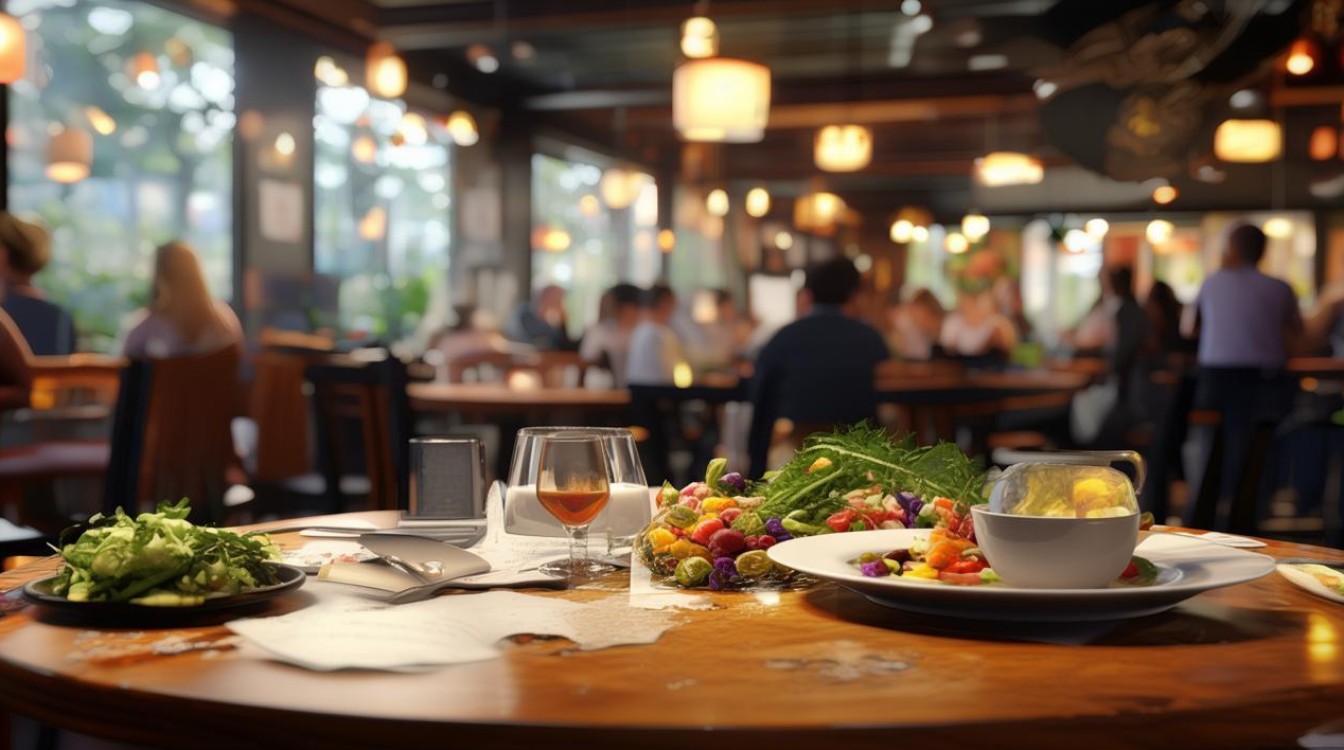雅思口语中的餐厅话题
雅思口语考试中,“restaurant”是一个高频话题,常出现在Part 1、Part 2和Part 3中,考生需要围绕餐厅的类型、体验、偏好、文化差异等展开讨论,展现词汇丰富度、语法准确性和逻辑连贯性,以下从常见问题、答题思路和实用表达三方面解析,帮助考生高效备考。

Part 1:基础问答
Part 1通常围绕个人经历展开,考官可能问以下问题:
-
Do you like eating out?
- 答题思路:明确立场 + 简单理由 + 举例。
- 示例:"Yes, I enjoy eating out because it saves time on cooking and lets me try diverse cuisines. For instance, I often visit local Italian restaurants near my home."
-
What’s your favorite type of restaurant?
- 答题思路:餐厅类型 + 特色 + 个人偏好。
- 示例:"I prefer family-run diners. They offer homemade dishes and a cozy atmosphere, unlike chain restaurants which feel impersonal."
-
How often do you go to restaurants?
- 答题思路:频率 + 原因 + 具体场景。
- 示例:"About twice a month, usually on weekends to celebrate birthdays or after a long workweek."
Part 2:个人陈述
Part 2要求描述一个具体经历,"Describe a restaurant you like." 可按以下结构展开:
-
Introduction
- 餐厅名称、位置、首次访问时间。
- 示例:"I’d like to talk about 'The Green Leaf,' a vegetarian restaurant in downtown Shanghai, which I first visited last year."
-
Appearance & Atmosphere
- 装修风格、灯光、音乐、客流量。
- 示例:"It has minimalist decor with wooden tables and potted plants. Soft jazz plays in the background, creating a relaxing vibe."
-
Food & Service
- 推荐菜品、口味、服务员态度。
- 示例:"Their signature mushroom risotto is creamy and aromatic. The staff are attentive and explain ingredients in detail for health-conscious customers."
-
Why You Like It
- 结合健康、社交或文化因素。
- 示例:"I love it because the menu changes seasonally, and it promotes sustainable eating—perfect for my eco-friendly lifestyle."
Part 3:深度讨论
Part 3聚焦社会和文化层面,考官可能问:
-
Why do some people prefer eating at home over dining out?
- 答题思路:成本控制、健康习惯、隐私需求。
- 示例:"Eating at home is cheaper and allows people to control ingredients, which is important for those with dietary restrictions."
-
How has technology changed the restaurant industry?
- 答题思路:在线预订、外卖平台、智能点餐系统。
- 示例:"Apps like Deliveroo have made food delivery more accessible, while QR code menus reduce contact during the pandemic."
实用词汇与表达
掌握以下词汇可提升回答质量:
| 类别 | 词汇/短语 |
|------------|-----------------------------------|
| 餐厅类型 | Fine dining, bistro, food court |
| 菜品描述 | Savory, aromatic, undercooked |
| 服务评价 | Attentive, slow, accommodating |
| 氛围 | Cozy, bustling, intimate |
常见误区与建议
- 避免单一回答:例如只说"I like it"需补充原因。
- 灵活使用时态:描述过去经历用一般过去时,谈论习惯用一般现在时。
- 加入细节:如"The waiter recommended a wine pairing that enhanced the flavor of the steak."
FAQs
Q1: 如何在Part 2中避免描述过于笼统?
A1: 使用具体细节增强画面感,"The restaurant’s walls are covered in vintage posters from the 1980s, and the chef greets customers at the entrance, which makes the experience feel personal."
Q2: 如何回答“Do you think traditional restaurants will disappear?”?
A2: 平衡观点:"While fast-casual chains are growing, traditional restaurants survive by offering unique experiences like live music or cooking classes, which technology cannot replace."











